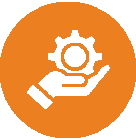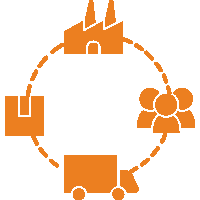Third-party logistics (3PL) services tailored for heavy engineering present unique challenges and opportunities compared to other industries.
3PL services for heavy engineering require a combination of expertise in logistics, transportation, regulatory compliance, and risk management to ensure the safe and efficient movement of oversized and valuable equipment
Here are some aspects that make 3PL in heavy engineering unique


Heavy engineering involves large and specialized equipment such as machinery parts, engines, turbines, and generators. 3PL providers need expertise in handling, transporting, and storing these items safely and efficiently.

Coordinating the transportation and logistics of heavy engineering components requires meticulous planning due to their size, weight, and often irregular shapes. Route planning, permits, and specialized transport vehicles are essential considerations.

Heavy engineering equipment may require adherence to specific customs regulations and safety standards, especially when crossing international borders. 3PL providers must ensure compliance with regulations to avoid delays and penalties.

The value of heavy engineering components makes them susceptible to theft, damage, or loss during transportation and storage. 3PL providers need robust risk management strategies, including insurance coverage and security measures, to mitigate these risks.

Inventory management is crucial to ensure that the right components are available when needed for assembly or maintenance. 3PL providers must implement efficient inventory tracking systems to monitor stock levels and facilitate just-in-time delivery.

Some 3PL providers offer value-added services such as assembly, installation, and commissioning support for heavy engineering equipment. This requires specialized skills and expertise to ensure proper setup and functionality.

Maintaining visibility throughout the supply chain is vital for effective management of heavy engineering logistics. Advanced tracking technologies, such as GPS and RFID, enable real-time monitoring of shipments and inventory.

Close collaboration with original equipment manufacturers (OEMs) and suppliers is essential to coordinate production schedules, manage inventory levels, and address any issues promptly

Transporting heavy engineering equipment can have significant environmental impacts due to fuel consumption and emissions. 3PL providers need to explore eco-friendly transportation options and adopt sustainable practices wherever possible.

Given the complexity of heavy engineering logistics, continuous improvement is crucial to optimize processes, reduce costs, and enhance customer satisfaction. Regular performance evaluations and feedback mechanisms help identify areas for improvement and innovation
